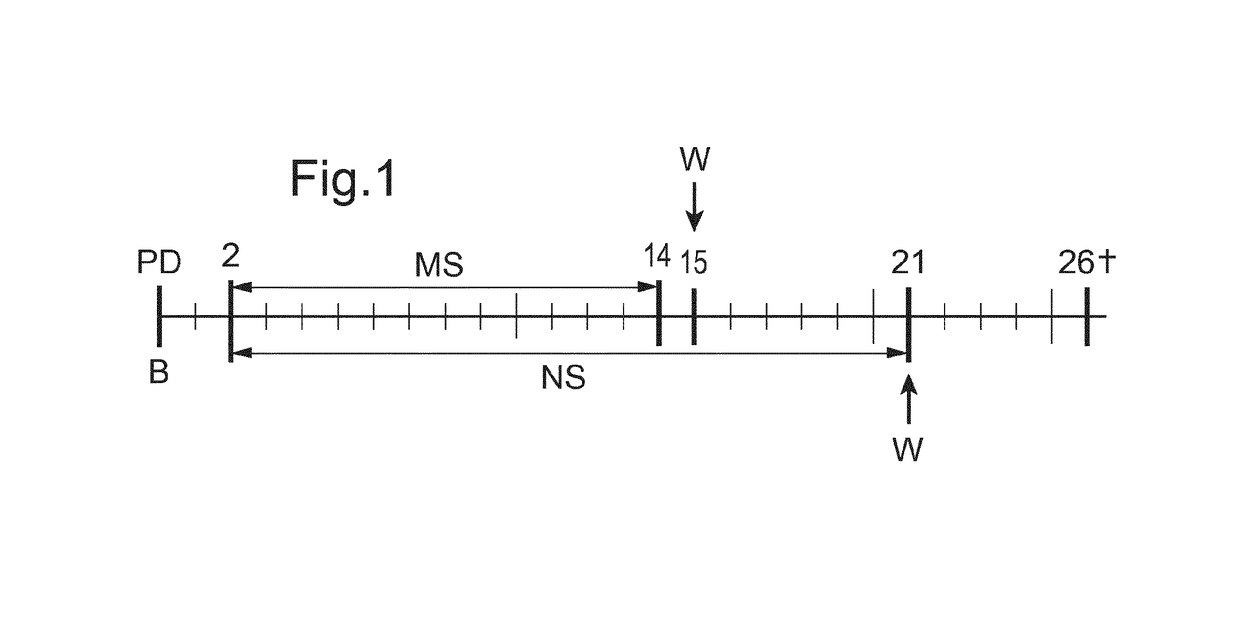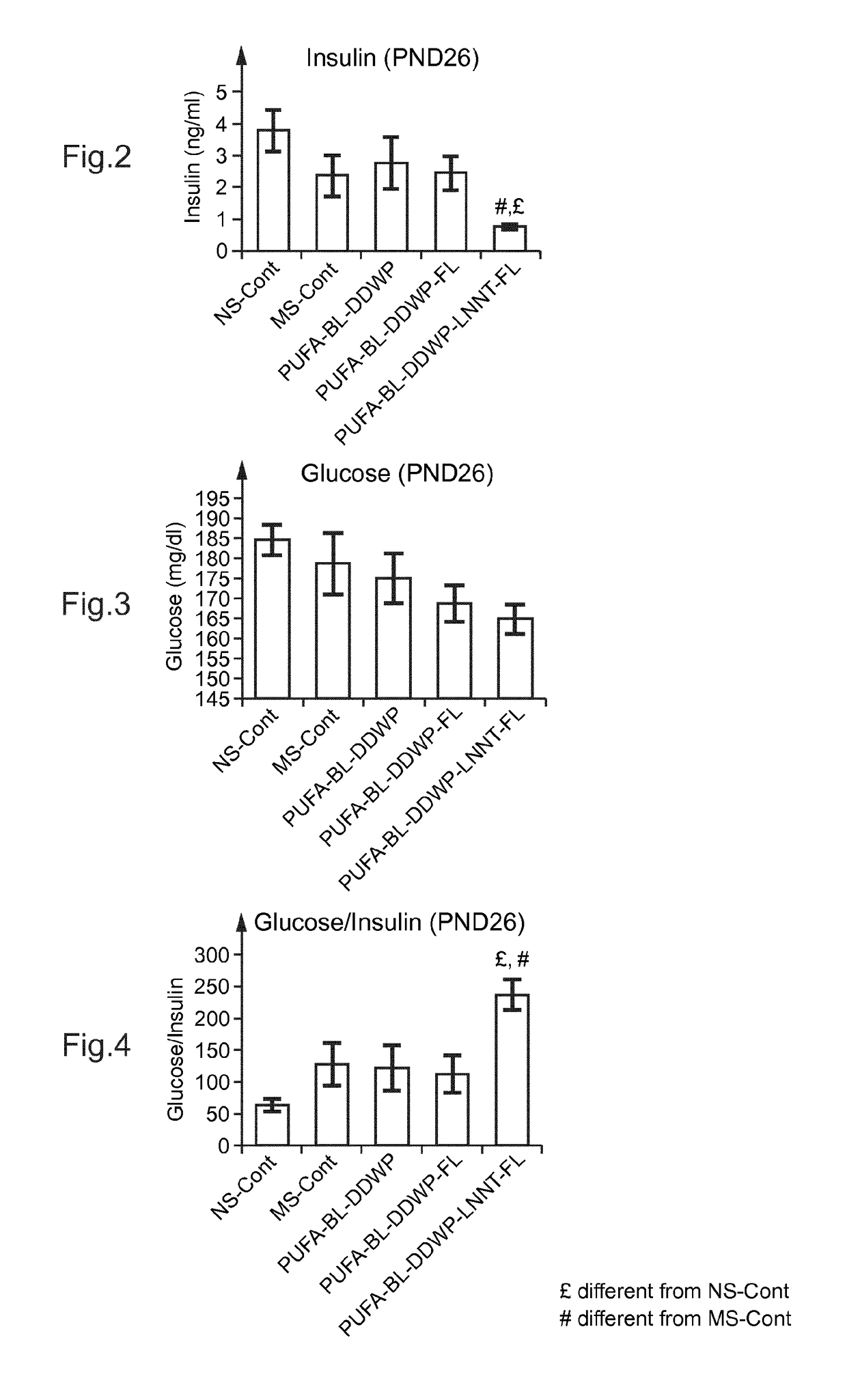Composition for use in increasing insulin sensitivity and/or reducing insulin resistance
a technology of insulin resistance and sensitivity, which is applied in the field of compound for increasing insulin sensitivity and/or reducing insulin resistance, can solve the problems of gluco-dependant cells not being recognized, body tissues not responding properly to insulin, and insulin receptors in tissues that cannot function properly, etc., and achieves the effect of increasing insulin sensitivity and reducing insulin resistan
- Summary
- Abstract
- Description
- Claims
- Application Information
AI Technical Summary
Benefits of technology
Problems solved by technology
Method used
Image
Examples
example
[0109]Experiments were carried out with respect to the effect of the supplementation of a oligosaccharide mixture which is a mixture of cow milk oligosaccharides (CMOS) enriched with galacto-oligosaccharides (demineralized, delactosed whey permeate or DDWP), and 2′-fucosyllactose (FL) and lacto N-neotetraose (LNnT), those two oligosaccharides being added to the mixture DDWP either alone (in two comparative examples) or in combination (according to the invention), LC-PUFA (arachidonic acid ARA- and docosahexaenoic acid -DHA-), and Bifidobacterium lactis (BL), on rat pups.
[0110]Methodology
PUM
| Property | Measurement | Unit |
|---|---|---|
| weight | aaaaa | aaaaa |
| wt % | aaaaa | aaaaa |
| temperature | aaaaa | aaaaa |
Abstract
Description
Claims
Application Information
 Login to View More
Login to View More - R&D
- Intellectual Property
- Life Sciences
- Materials
- Tech Scout
- Unparalleled Data Quality
- Higher Quality Content
- 60% Fewer Hallucinations
Browse by: Latest US Patents, China's latest patents, Technical Efficacy Thesaurus, Application Domain, Technology Topic, Popular Technical Reports.
© 2025 PatSnap. All rights reserved.Legal|Privacy policy|Modern Slavery Act Transparency Statement|Sitemap|About US| Contact US: help@patsnap.com


